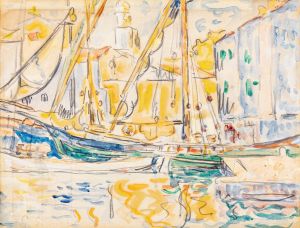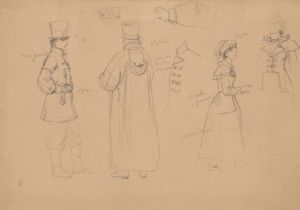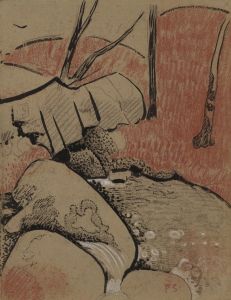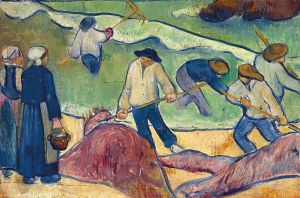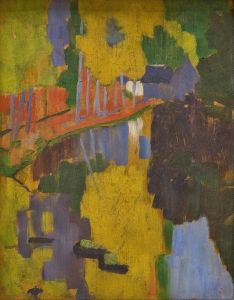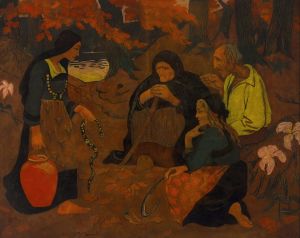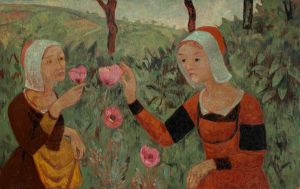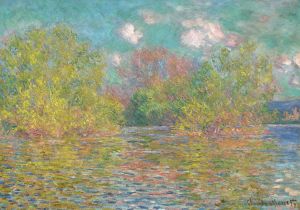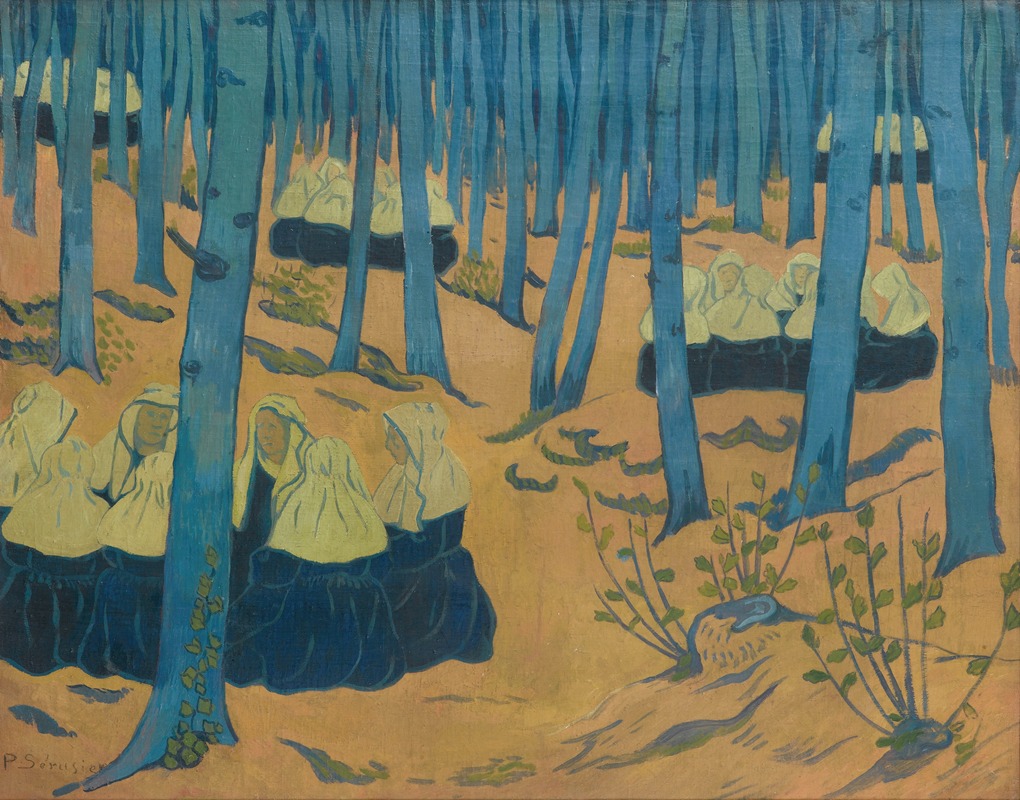
Bretonnes, Réunion Dans Le Bois Sacré
A hand-painted replica of Paul Sérusier’s masterpiece Bretonnes, Réunion Dans Le Bois Sacré, meticulously crafted by professional artists to capture the true essence of the original. Each piece is created with museum-quality canvas and rare mineral pigments, carefully painted by experienced artists with delicate brushstrokes and rich, layered colors to perfectly recreate the texture of the original artwork. Unlike machine-printed reproductions, this hand-painted version brings the painting to life, infused with the artist’s emotions and skill in every stroke. Whether for personal collection or home decoration, it instantly elevates the artistic atmosphere of any space.
Paul Sérusier's painting "Bretonnes, Réunion Dans Le Bois Sacré" is a notable work by the French Post-Impressionist artist, who was a key figure in the Symbolist movement and a founding member of the group known as Les Nabis. Sérusier was deeply influenced by the artistic innovations of Paul Gauguin, and his work often reflects a synthesis of Symbolism and Synthetism, which are characterized by the use of bold colors, simplified forms, and an emphasis on conveying emotional or spiritual experiences rather than direct representation.
"Bretonnes, Réunion Dans Le Bois Sacré," which translates to "Breton Women, Meeting in the Sacred Grove," is emblematic of Sérusier's interest in the mystical and spiritual aspects of the Breton landscape and its people. The painting likely depicts a group of Breton women gathered in a wooded area, a setting that suggests a connection to the sacred or the mystical. This theme is consistent with Sérusier's fascination with the spiritual traditions and folklore of Brittany, a region in northwestern France known for its distinct cultural identity and Celtic heritage.
Sérusier's use of color in this painting is particularly noteworthy. He employs a palette that is both vibrant and harmonious, using color not just to depict the scene but to evoke a particular mood or atmosphere. This approach is in line with the principles of Synthetism, which Sérusier adopted after his pivotal encounter with Gauguin in Pont-Aven. Gauguin encouraged Sérusier to use color in a more expressive and symbolic manner, a lesson that Sérusier applied to his subsequent works.
The composition of "Bretonnes, Réunion Dans Le Bois Sacré" is likely characterized by a sense of rhythm and balance, with the figures and the natural setting arranged in a way that guides the viewer's eye through the painting. This compositional style reflects the influence of Japanese prints and the decorative arts, which were popular among the Nabis and other avant-garde artists of the time.
Sérusier's interest in the spiritual and the mystical is also evident in his choice of subject matter. The gathering of women in a sacred grove suggests a ritualistic or communal activity, perhaps drawing on the ancient Celtic traditions of Brittany. This focus on the spiritual dimension of everyday life is a hallmark of Symbolist art, which sought to explore the deeper meanings and hidden realities behind the visible world.
"Bretonnes, Réunion Dans Le Bois Sacré" is a testament to Sérusier's ability to blend the influences of Gauguin, Symbolism, and the unique cultural landscape of Brittany into a cohesive and evocative work of art. The painting reflects his commitment to exploring the spiritual and emotional dimensions of human experience, using color and form to transcend the literal and engage the viewer on a deeper level.
While specific details about the painting's creation, such as its exact date or current location, may not be readily available, "Bretonnes, Réunion Dans Le Bois Sacré" remains an important example of Sérusier's artistic vision and his contribution to the development of modern art in the late 19th and early 20th centuries. Through works like this, Sérusier helped pave the way for future generations of artists to explore new ways of seeing and representing the world around them.





